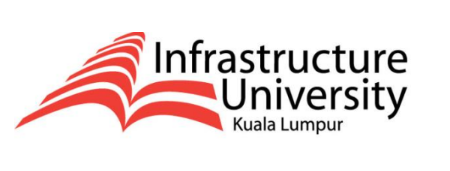Islamic Economic Crisis: A Systematic Review Using Bibliometric Analysis
DOI:
https://doi.org/10.21154/joie.v2i2.5075Keywords:
economic crisis, financial crisis, bibliometricAbstract
The financial crisis impacts the economy of developing countries. The existence of a financial crisis causes the economic growth of a country to decline. Islam has a perspective on the economic crisis issue. This research aims to find out and map research related to trends in the Islamic Economic Crisis published by leading journals from 1978 to 2022 and have been indexed by Scopus. Analysis of keyword trends, authors, and institutions. no one has used bibliometric analysis in this study. The data analyzed were 531 research publications using descriptive statistical methods and bibliometric analysis. The results show that the number of articles discussing the theme of the Islamic Economic Crisis has an increasing trend from year to year, along with the global economic crisis in 2008. the most prolific is Hassan M.K. Meanwhile, the country with the most famous writers and the most in Malaysia. Based on the bibliometric analysis, the leading causes of the financial crisis are; Natural Disasters, Political Instability, Social Instability, Faction Reserve Banking System, and Product Derivation. The research provides information for researchers who focus on research in the field of the Islamic Economic Crisis. In the end, this theme is possible to continue to develop.
Krisis keuangan berdampak pada ekonomi negara-negara berkembang. Adanya krisis keuangan menyebabkan pertumbuhan ekonomi suatu negara menurun. Islam memiliki perspektif terhadap isu krisis ekonomi. Penelitian ini bertujuan untuk mengetahui dan memetakan penelitian terkait tren Krisis Ekonomi Islam yang diterbitkan oleh jurnal-jurnal terkemuka dari tahun 1978 hingga 2022 dan telah terindeks Scopus. Analisis tren kata kunci, penulis, dan institusi. Tidak ada yang menggunakan analisis bibliometrik dalam penelitian ini. Data yang dianalisis sebanyak 531 publikasi penelitian menggunakan metode statistik deskriptif dan analisis bibliometrik. Hasil penelitian menunjukkan bahwa jumlah artikel yang membahas tema Krisis Ekonomi Islam memiliki tren yang meningkat dari tahun ke tahun, seiring dengan krisis ekonomi global pada tahun 2008. yang paling produktif adalah Hassan M.K. Sementara itu, negara dengan penulis paling terkenal dan terbanyak di Malaysia. Berdasarkan analisis bibliometrik, penyebab utama krisis keuangan adalah; Bencana alam, ketidakstabilan politik, ketidakstabilan sosial, sistem perbankan cadangan faksi, dan derivasi produk. Penelitian ini memberikan informasi bagi peneliti yang fokus pada penelitian di bidang Krisis Ekonomi Islam. Pada akhirnya, tema ini memungkinkan untuk terus berkembang.
References
Ahmed, E., Rosser Jr, J. B., & Uppal, J. Y. (2010). Emerging markets and stock market bubbles: Nonlinear speculation? Emerging Markets Finance and Trade, 46(4), 23”“40.
Almoharby, D. (2011). The current world business meltdown: Islamic religion as a regulator. Humanomics.
Arthur, E. J. (1960). Business Cycles, Their Nature, Cause, and Control. Prentice Hall, Inc. Englewood Cliffs-USA.
Baroroh, U. (2012). Analisis sektor keuangan terhadap pertumbuhan ekonomi regional di wilayah Jawa: Pendekatan model levine. Etikonomi, 11(2).
Baum, S., & Mitchell, W. (n.d.). Labor Underutilization in the Years Following the GFC: An Australian Example.
Chapra, M. U. (2007). 21 Challenges facing the Islamic financial industry. Handbook of Islamic Banking, 325.
Chapra, M. U. (2008). The global financial crisis: can Islamic finance help minimize the severity and frequency of such a crisis in the future. In A paper presented at the Forum on the Global Financial Crisis at the Islamic Development Bank on (Vol. 25).
Djankov, S., & Panizza, U. (2020). Developing economies after COVID-19: An introduction. COVID-19 in Developing Economies, 8.
Estes, R. J., & Tiliouine, H. (2014). Development trends in Islamic societies: From collective wishes to concerted actions. Social Indicators Research, 116(1), 67”“114.
Faiz-Ur-Rehman, Ali, A., & Nasir, M. (2007). Corruption, trade openness, and environmental quality: a panel data analysis of selected South Asian countries. The Pakistan Development Review, 673”“688.
Farooq, M. U., John, L., & Jacome, M. F. (2009). Compiler controlled speculation for power-aware file extraction in dataflow architectures. In International Conference on High-Performance Embedded Architectures and Compilers (pp. 324”“338). Springer.
Ghoul, W. A. (2011). The dilemma facing Islamic finance and lessons learned from the global financial crisis. Journal of Islamic Economics, Banking, and Finance, 7(1), 57”“76.
Hassan, M. K., & Kayed, R. N. (2009). The global financial crisis, risk management and social justice in Islamic finance. Risk Management and Social Justice in Islamic Finance.
Imansyah, M. H. (2008). Krisis keuangan di Indonesia, dapatkah di ramalkan? Elex Media Komputindo.
Iqbal, M., & Khan, T. (2004). Financing public expenditure: An Islamic perspective. Islamic Development Bank, Islamic Research and Training Institute.
Kaminsky, G., Lizondo, S., & Reinhart, C. M. (1998). Leading indicators of currency crises. Staff Papers, 45(1), 1”“48.
Khan, M. H. (2001). The new political economy of corruption. Development Policy in the Twenty-First Century: Beyond the Post-Washington Consensus, 112”“135.
Kyrili, K., & Martin, M. (2010). The impact of the global economic crisis on the budgets of low-income countries. Oxfam and Development Finance International. July. Retrieved from http://www.oxfam.de/sites/www.oxfam.de/files/the_impact_of_the_economic_crisis_on_the_budget_of_low-income_countries.pdf
Meera, A. K. M., & Larbani, M. (2009). Ownership effects of fractional reserve banking: an Islamic perspective. Humanomics.
Mirakhor, A., & Krichene, N. (2009). The recent crisis: lessons for Islamic finance.
Nafi’Hasbi, M. Z. (2019). Dampak Krisis Keuangan Global Terhadap Perbankan Di Indonesia. LISAN AL-HAL: Jurnal Pengembangan Pemikiran Dan Kebudayaan, 13(2), 385”“400.
Nurbaya, S. (2020). Manajemen Sumberdaya Manusia di Era Revolusi Industri 4.0 (1st ed.). Makassar: Nas Media Pustaka. Retrieved from https://books.google.co.id/books?id=0TQgEAAAQBAJ&pg=PA182&lpg=PA182&dq=Menurut+ahli+ekonomi,+pengertian+krisis+ekonomi+secara+sederhana+adalah+suatu+keadaan+dimana+sebuah+Negara+yang+pemerintahnya+tidak+dipercaya+lagi+oleh+rakyatnya,+khususnya+masalah+fin
Oguz, O., & Tabakoglu, A. (1991). A Historical Approach to Islamic Pricing Policy: A Research on the Ottoman Price System and its Application. Journal of King Abdulaziz University: Islamic Economics, 3.
Oktavilia, S. (2008). Deteksi Dini Krisis Perbankan Indonesia: Identifikasi Variabel Makro Dengan Model Logit. Jejak, 1(1), 1”“14.
Othman, R., Aris, N. A., Azli, R. M., & Arshad, R. (2012). Islamic banking: The firewall against the global financial crisis. Journal of Applied Business Research (JABR), 28(1), 9”“14.
Pattah, S. H. (2013). Peranan Intermediary dalam sistem temu balik informasi. Khizanah Al-Hikmah: Jurnal Ilmu Perpustakaan, Informasi, Dan Kearsipan, 1(2), 157”“166.
Seidu, A. M. (2009). Current global financial crisis: Cause and solution. International Financial Crisis, 26.
Setiawan, I. (2020). Analisis Peran Perbankan terhadap Pertumbuhan Ekonomi di Indonesia: Bank Syariah Versus Bank Konvensional. Jurnal Akuntansi, Ekonomi Dan Manajemen Bisnis, 8(1), 52”“60.
Sidani, Y. (2019). Does Islam impede development? A critical analysis. Journal of Islamic Accounting and Business Research.
Siddiqi, M. N. (2008). The current financial crisis and Islamic economics. IIUM Journal of Economics and Management, 16(2), 125”“132.
Smolo, E., & Mirakhor, A. (2010). The global financial crisis and its implications for the Islamic financial industry. International Journal of Islamic and Middle Eastern Finance and Management.
Subana, M. (2005). Dasar-dasar penelitian ilmiah.
Sudarsono, H. (2009). Dampak krisis keuangan global terhadap perbankan di indonesia: perbandingan antara bank konvensional dan bank syariah. La_Riba, 3(1), 12”“23.
Sugiyono, M. P. P. (2007). Pendekatan Kuantitatif. Kualitatif, Dan R&D, Bandung: Alfabeta.
Susilo, J., & Ratnawati, N. (2016). Analisis Pengaruh Pembiayaan Bank Syariah Dan Tenaga Kerja Terhadap Peningkatan Produk Domestik Bruto (Pdb): Analisis Sektoral Tahun 2006-2013. In PROSIDING SEMINAR NASIONAL CENDEKIAWAN.
Trabelsi, M. A. (2011). The impact of the financial crisis on the global economy: can the Islamic financial system help? The Journal of Risk Finance.
Wijaya, T. (2013). Metodologi penelitian ekonomi dan bisnis teori dan praktik. Yogyakarta: Graha Ilmu.
Zarqa, M. (2019). Islamic and Conventional Economics”“Dialogue and Ethics. Journal of King Abdulaziz University: Islamic Economics, 32(2).
Zikrillah, A., & Zikrillah, A. L. (2020). SISTEM EKONOMI INDONESIA KRISIS EKONOMI DAN RESESI EKONOMI.


















